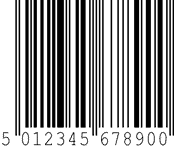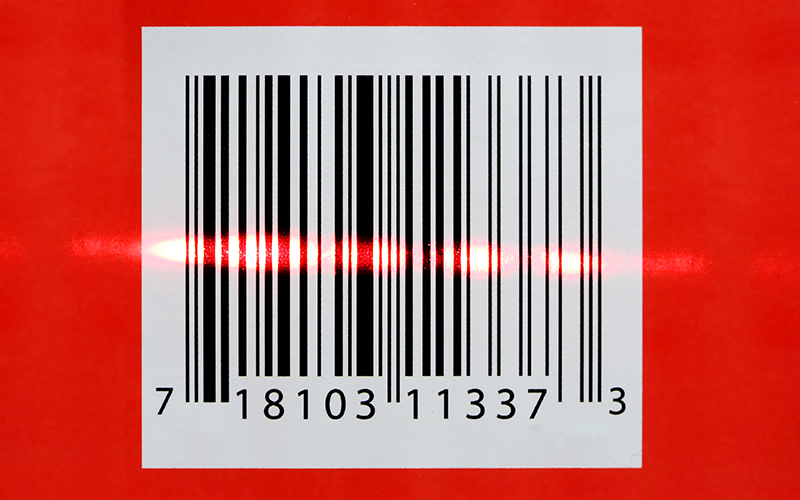One of the things that you often see on soap and cosmetic labels are bar codes. They are not required by regulation, but can make a big difference in where and how your products can be sold.
Many of the large stores or retail chains use UPCs (“Universal Product Codes”) on all their products, both at the point of sale when the customer actually buys the product, but also for inventory, stocking, purchasing and more. If you are looking to get into the wholesale market (especially if you want to wholesale to large stores or chains) bar codes may be an important part of your package label.
What is a Bar Code?
A “bar code” is a graphical representation of dark and light bars of various widths representing numbers, which can be machine scanned. There are many different types of bar codes, but when you’re talking about product labeling, what’s generally being referred to is the ”Universal Product Code.” It is a 12-digit number assigned to a specific company and product. UPC codes are designed to be used at point of sale.
Different sized and shaped bar codes are also used for other purposes (supply chain management, inventory management, health care management, etc.)
QR codes, which can take you to a website when scanned by an appropriate app, are another type of bar code.
How are UPC Numbers Assigned?
Since there are about a gazillion different products out on the market, it’s important that each UPC number is unique. That’s why larger stores and chains don’t want you to just invent your own UPC code. There’s too much chance that it would duplicate some other UPC code, which could cause huge headaches.
Enter GS1, an international, not-for-profit association that has set the standard for bar codes and UPCs. Looking at the people on their Management Board, you’ll see executives from Google, Amazon, Wal-Mart, Kroger, Procter & Gamble, Nestle, Coca-Cola, Walgreens, and more. GS1 does a lot of different things (the GS1 brochure is an interesting read) to keep things flowing smoothly in the international world of supply chain management. They also have a pretty extensive FAQ covering just about everything having to do with bar codes.
One of their functions is to assign bar codes and UPC numbers to their “Member Organizations.” For a small (or large!) annual fee, you can become a member and get your own UPC codes assigned. It’s actually pretty easy.
Getting Your Own UPC Codes
Each country has their own GS1 Member Organization which issues bar codes in their country. First, find your local GS1 office and go to their website. Just follow the directions for becoming a member and purchasing the number of bar codes you think you will need. It appears that pricing for bar codes varies from country to country.
At GS1 US you purchase a “GS1 Company Prefix” based on the number of bar codes you think you’ll need. When calculating, remember that each size and scent is a unique product. There’s an initial fee and then an annual renewal fee. For example, for 1 to 100 bar codes, the initial fee is $750 and the annual renewal fee is $150. Once you determine how many bar codes you need, you fill in the application, pay the fee and get your prefix and range of numbers. You can then assign the numbers to your products yourself.

At GS1 Australia the process and prices are a little different. On their website, you order your bar codes based on business size (small business is turnover of less than $1M per year). When you sign up under the small business package, you have two options: fewer than 5 different products; or more than 5 products. For the more-than-5-bar-codes option, you end up purchasing 1,000 bar codes for a total of $990.00 ($300 one-off joining fee, $600 annual fee and $90 GST).
UPC Resellers
There are some online companies that offer UPC codes, sometimes at lower prices (given that you don’t have to “join” to get the codes). Generally, these companies join GS1, get their own company prefix and a large number of UPC codes from GS1, and then resell the UPC codes to smaller companies.
While using a company that resells bar codes under their own company name may work out to cost less per bar code, larger stores or chains may not accept such UPC codes as the numbers can’t be easily tracked back to the actual company. If you choose to go this route, be sure to check with your wholesale customers to ensure they will accept this type of UPC code.
Using Your UPC Codes
Once you have purchased your UPC codes, you have to assign unique numbers within your assigned range to your products. Each product variant (that is each size, scent, color, etc.) must have its own UPC code.
UPC codes must be printed onto product packages clearly and legibly, in the correct format and size, so they can be reliably scanned. Large stores and chains often use UPC codes for tracking inventory (as well as at point of sale).
All of the GS1 sites I checked had a wide range of guidance documents to help you with assigning numbers and printing the bar codes on the packages.

Shameless plug!
To really be able to create your own labels that comply with the regulations, get my book from Amazon and use it.
4th Edition – Released March 5, 2025!!!
Or order directly from me (and get a signed copy)!


Leave a Reply